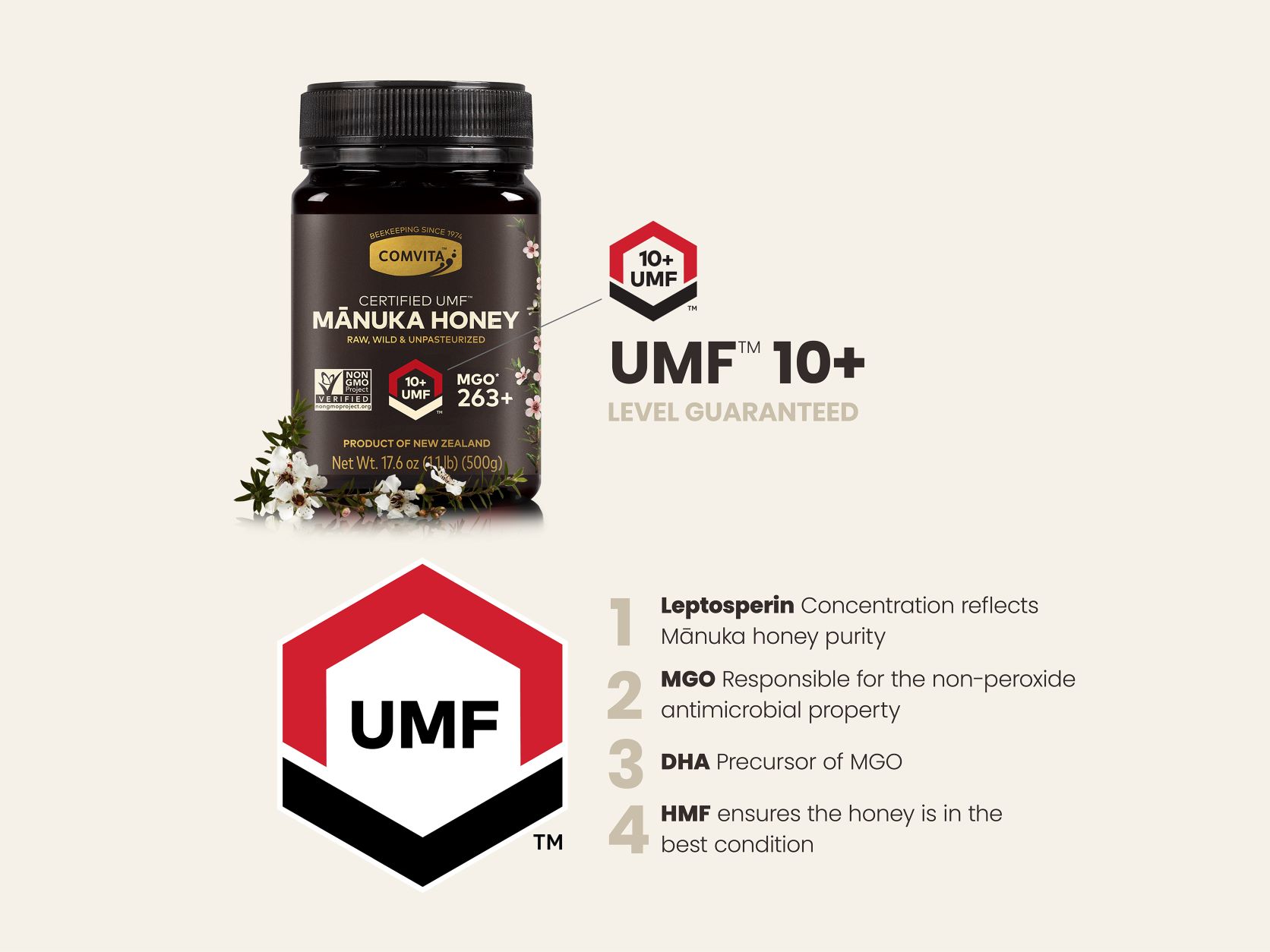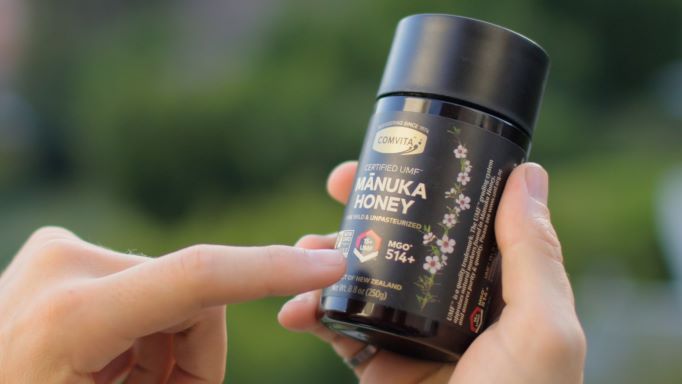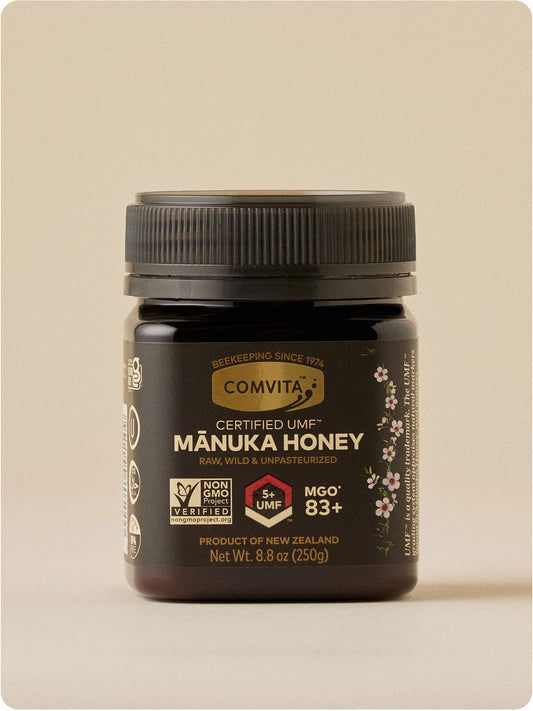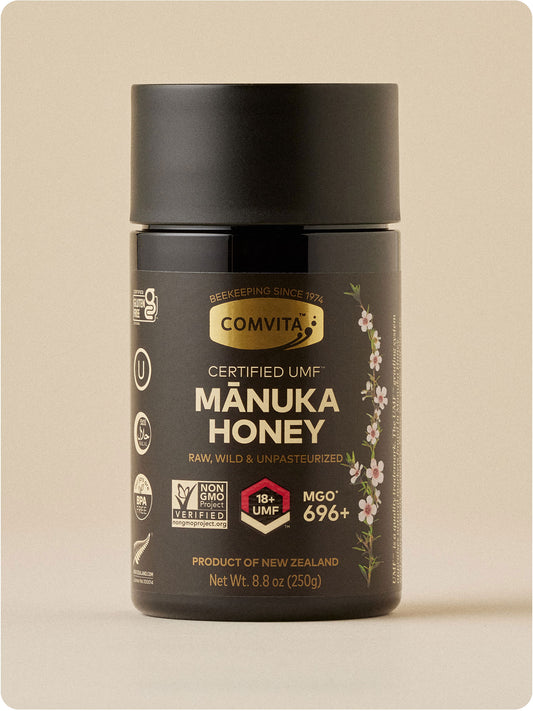
What is MGO?
Manuka Honey is unique in the honey world in that it contains over 2000 different natural compounds which is significantly higher than the number of compounds found in other honey types.
There’s no other honey in the world like New Zealand Manuka Honey. It’s made by bees collecting nectar from the Manuka plant (Leptospermum scoparium) and genuine Manuka Honey is one of nature’s rare and powerful wonders, renowned for its unique properties.
Sounds simple. But as you may have discovered, shopping for the best Manuka Honey may not be quite so easy. With so many different grading systems and distinctions, you probably find yourself wondering, what do all those numbers mean? Is there honestly a difference? We’re going to let you in on a little secret: yes, there is - and it’s a big one!
So keep reading to discover what is MGO and why it’s important, but why it’s not the only factor that matters when selecting the best and most authentic Manuka Honey.
How is Manuka Honey rated?
Until recently, there was no single standard for what constitutes real Manuka Honey. Even now, many authenticity claims are made, even though some producers haven’t tested or verified what’s in the jar! To keep up with increasing consumer demand, many Manuka Honey brands are now in natural food stores and grocery stores across the country. Some of these are labeled with terms like “Bio-Active”, “Active”, or “Factor”, with numbers ranging from 5 to 500.
No wonder it’s hard to tell the difference between verifiable quality and marketing hype.
There are a variety of grading systems and distinctions that exist in the marketplace today, including MGO. But at Comvita we believe the most important seal to look for is UMF™, a quality trademark identifying natural, authentic Manuka Honey. The number represents four unique signature compounds which ensure purity and quality. These are:
Methylglyoxal (MGO)
This is the compound chiefly responsible for the unique property of Manuka Honey and forms the basis of the UMF™ grading system.
Leptosperin
Leptosperin is found in the nectar of Manuka flowers and is the most discerning characteristic to distinguish Manuka Honey from other honey types.
Hydroxymethylfurfural or HMF
We test for hydroxymethylfurfural, a compound that assures honey has not been overheated or stored too long, and is in the best condition to maintain the unique blend of living properties found in raw Manuka Honey.
DHA
Dihydroxyacetone (as it’s known to us) is slowly converted to MGO in healthy living honey. The higher the DHA content, the longer the life of the MGO content in your Manuka Honey – which is why the best Manuka Honey must have more than 70 mg/kg DHA to be UMF™ certified.

So what is MGO and why is it important?
As shown above, MGO stands for ‘Methylglyoxal’. MGO is a unique naturally occurring chemical compound found in Manuka Honey, which gives it its unique antibacterial properties and helps make it one of the most sought after and rarest honeys in the world.
It’s one of the four unique compounds that can be used to identify the purest and best Manuka Honey. The Methylglyoxal (MGO) grading system solely measures the amount of MGO present in Manuka Honey (in mg/kg). MGO is a compound that contributes to the unique non-peroxide antibacterial activity of Manuka Honey. However, synthetic MGO can be manufactured and added into honey to create ‘fake’ Manuka Honey.
Therefore, measuring just MGO alone does not give you sufficient assurance of the authenticity, purity and quality of the Manuka Honey you are buying.
What other measures can I use to know I’m getting the best?
When it comes to rating the quality of Manuka Honey, there really is no comparison - UMF™ (Unique Manuka Factor) is the global independent standard for Manuka Honey.

The three important compounds that measure the quality of your Manuka Honey.
When you see the UMF™ mark on your jar of Comvita honey, it means it’s been independently certified for Potency, Authenticity, Freshness, and Purity by the UMF™ Honey Association of New Zealand (UMFHA). As well as regular monitoring, the UMFHA also conduct random sampling to ensure Manuka Honey carrying the UMF™ mark is always true to label.
Few other honeys are as tested and trusted as Comvita’s. As a world leader in Manuka Honey, nearly 50 years of beekeeping science, knowledge and care is lovingly bottled into every jar.
How do I know how much MGO is in my Manuka Honey?
When you see MGO on a Comvita Manuka Honey label, it has a number, e.g. MGO 50+. This number would mean that this honey contains 50mg/kg of MGO. The higher the concentration of MGO, the increased concentration of the unique properties.

MGO is one of the four measures used in genuine UMF Manuka Honey.
Made by nature, proven by science.
At Comvita we’ve been perfecting our beekeeping craft for nearly 50 years, sourcing Manuka Honey from the remote hills and pristine forests of New Zealand. We’re thrilled that nutritionists, health practitioners, and natural wellness experts across the globe are now discovering the power of this pure, precious resource.
We’re committed to investing in ground-breaking research to discover more benefits of Manuka Honey and unlocking even more of the science behind this incredible gift from nature. Leaning into nature and science is what makes Comvita different and sets us apart as leaders.

You can be confident that when you purchase Comvita Manuka Honey, it’s the real deal.
We hope that this guide has helped you understand the way Manuka Honey is rated so you can make informed choices and enjoy the benefits of Comvita Real Manuka Honey for yourself.






